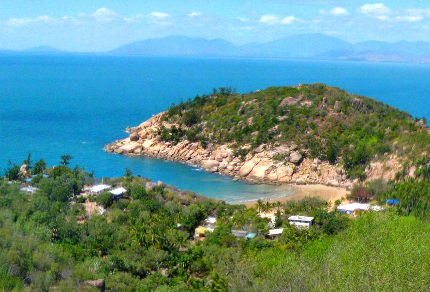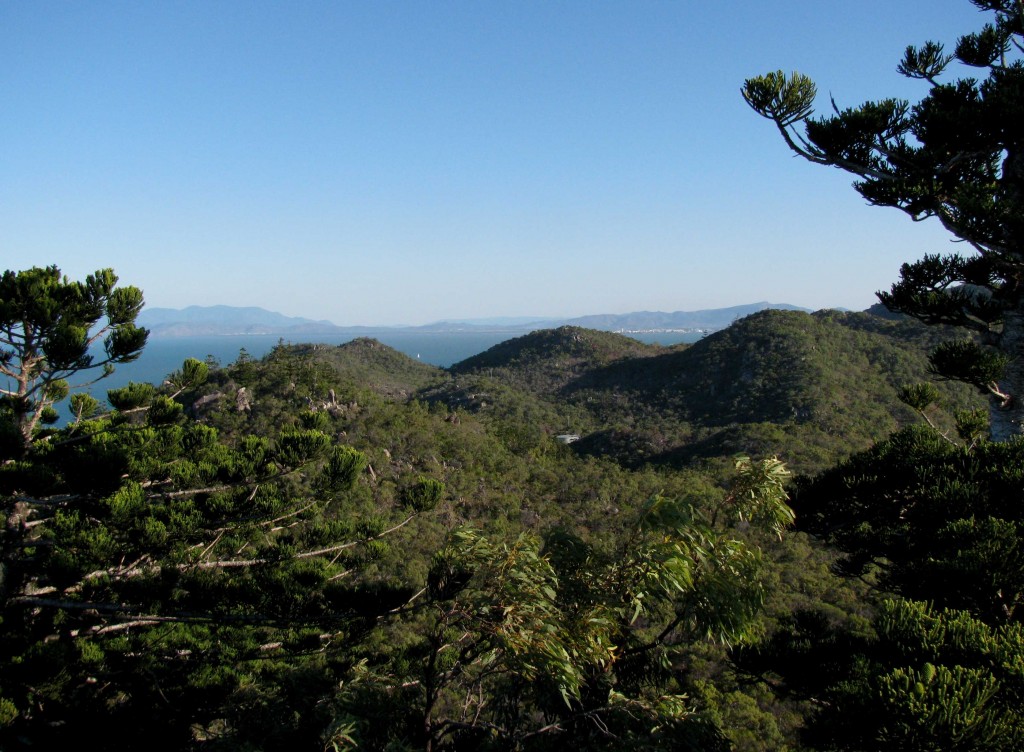
Magnetic Island Hills and Hoop Pines, seen from Arcadia Track (© Vilis Nams)
After breaking camp, Vilis and I bussed to Nelly Bay, where we stored our backpacks at the ferry terminal before heading off on an 8-kilometre hike along Arcadia Track. Beyond the village, the narrow track first led us through dense vine thicket north along Gustav Creek in a valley between Mount Cook to the west and an unnamed hill to the east. Orange-footed scrubfowl scratched up forest litter, and skinks raced for cover at our passing. Sulphur-crested cockatoos screeched raucous rants while laughing kookaburras chortled demonically, the two bird species shredding the air with their cacophonous racket.
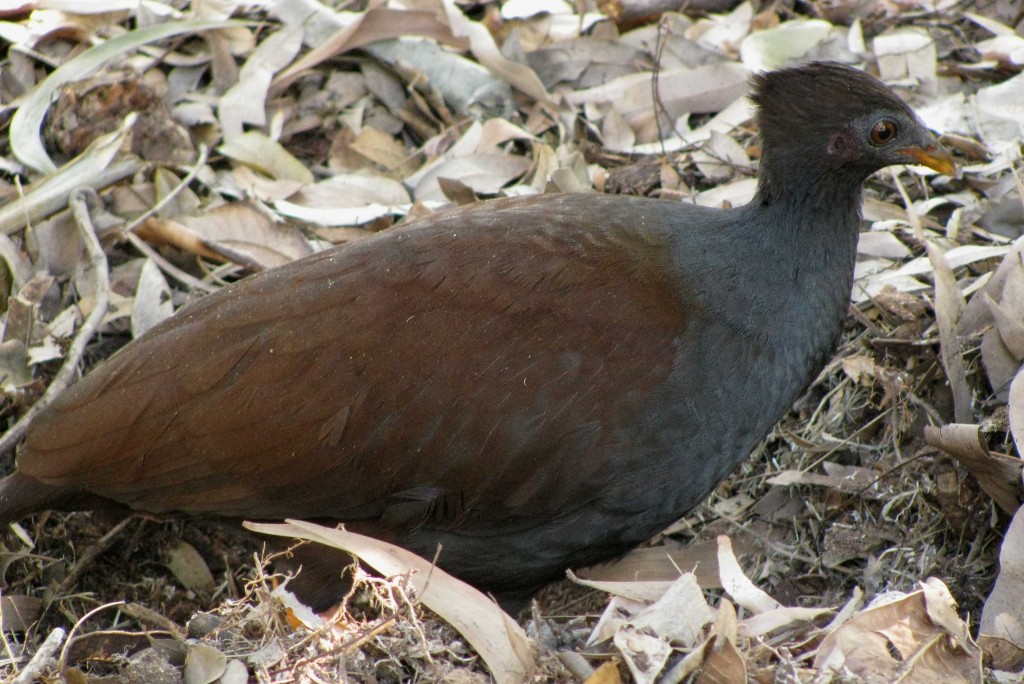
Orange-footed Scrubfowl (© Vilis Nams)
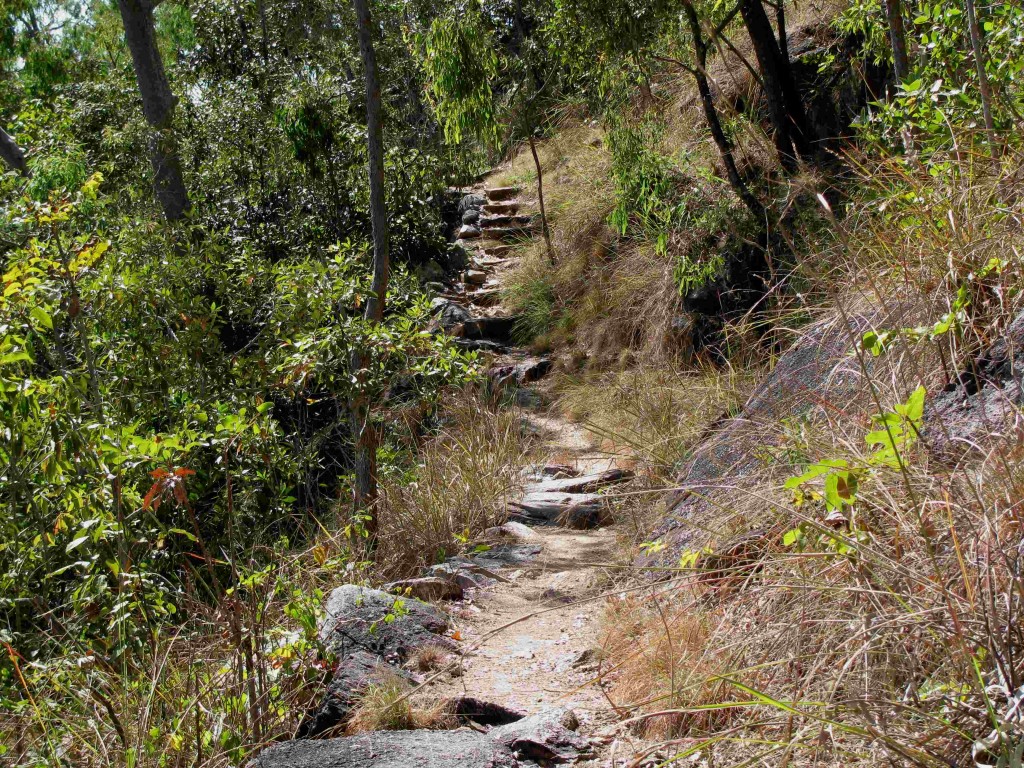
Arcadia Track (© Vilis Nams)
We ascended among massive boulders, the shady trail steep and laid with rough steps formed from flat-topped, granite rocks. The path traced the side of the unnamed hill and led us north to a water tank perched high above the village, after which it made a right-angle turn onto the exposed north slope of the hill. We followed steep switchbacks and level sections of trail heated by late morning sun, startling small rainbow skinks and robust eastern striped skinks from their basking. They moved into jerky reptilian motion, the rainbow skinks freezing after only a few steps; the eastern striped skinks flashing into broken bursts of speed as they sought cover.
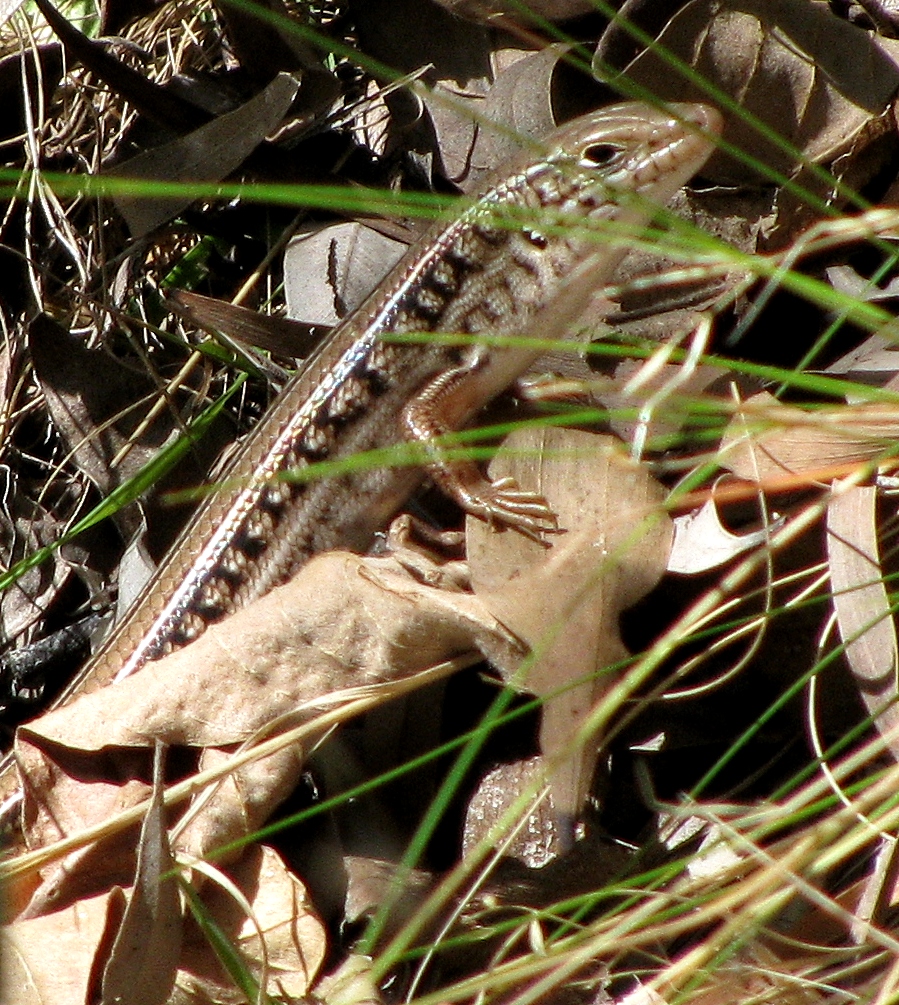
Eastern Striped Skink, Ctenotus robustus (© Vilis Nams)
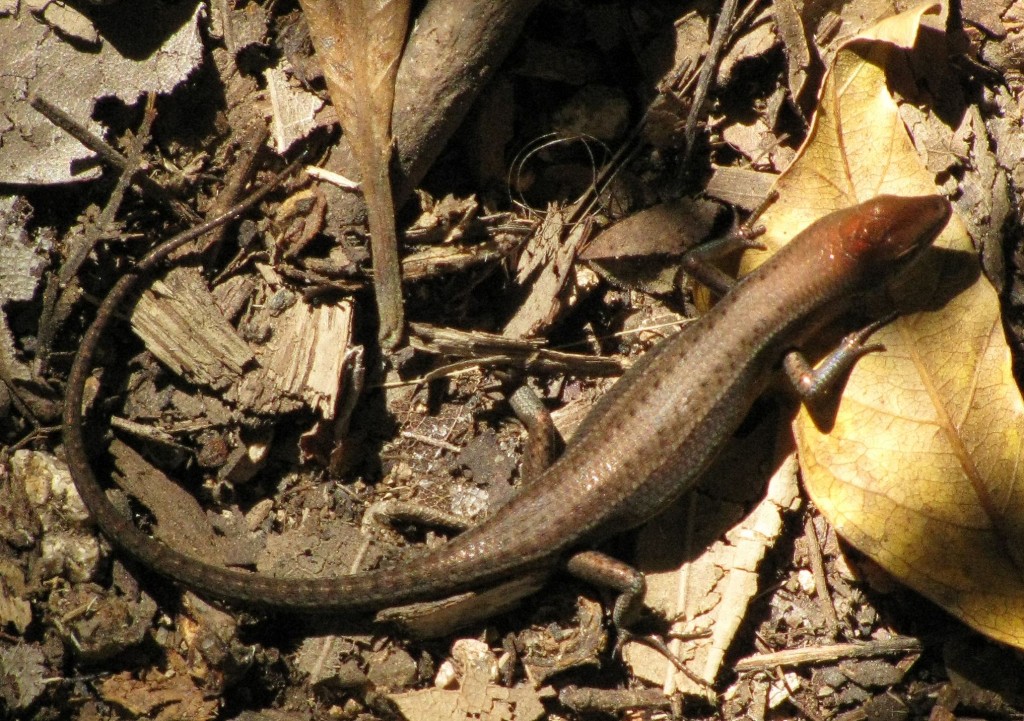
Rainbow Skink, Carlia pectoralis (© Vilis Nams)
From high on the hillside, we gazed northward to Horseshoe Bay, where sailboats rode peacefully at anchor and jet-ski riders carved a serpentine path through scintillating waves. The plain adjacent to the bay, which once supported pineapple plantations, lay somnolent and mostly wooded beneath the tropical sun. Farther east along the trail, Sphinx Lookout provided an entrancing view of the island’s southeast coast, in particular Alma Bay with its rocky headlands speared by flaring hoop pines and its tidy crescent of beach beyond which swimmers and snorkellers frolicked in gentle, turquoise waves. Dark patches of coral reef were visible in the bay close to shore and attached to the bay’s rocky southern border.
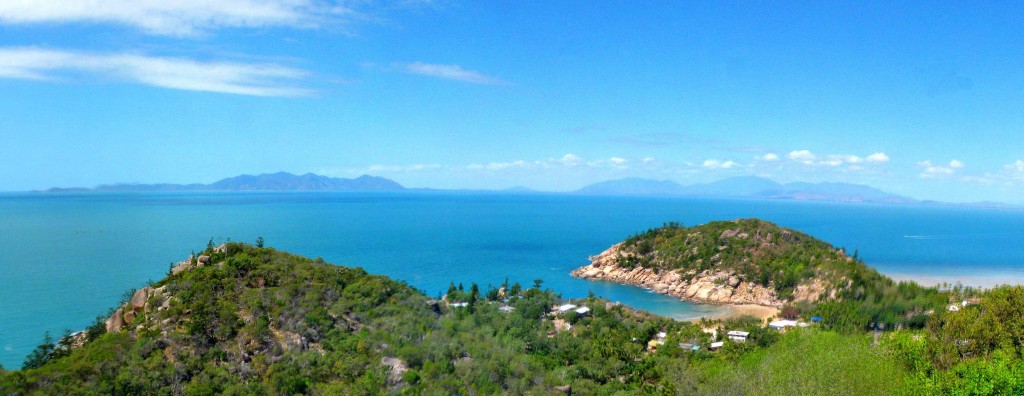
View of Alma Bay seen from Arcadia Track, Magnetic Island (© Vilis Nams)
Lured on by the picture-perfect image of Alma Bay, we descended to the eastern trailhead of the track in Arcadia, hiking past massive granite boulders encrusted with black and pale lime-green lichen, as well as more rustlings of skinks in fallen, woodland leaves. At Alma Bay, we waded in cool water, revelling in the wave-washed sand and rich intertidal life of the rocks bordering the beach.
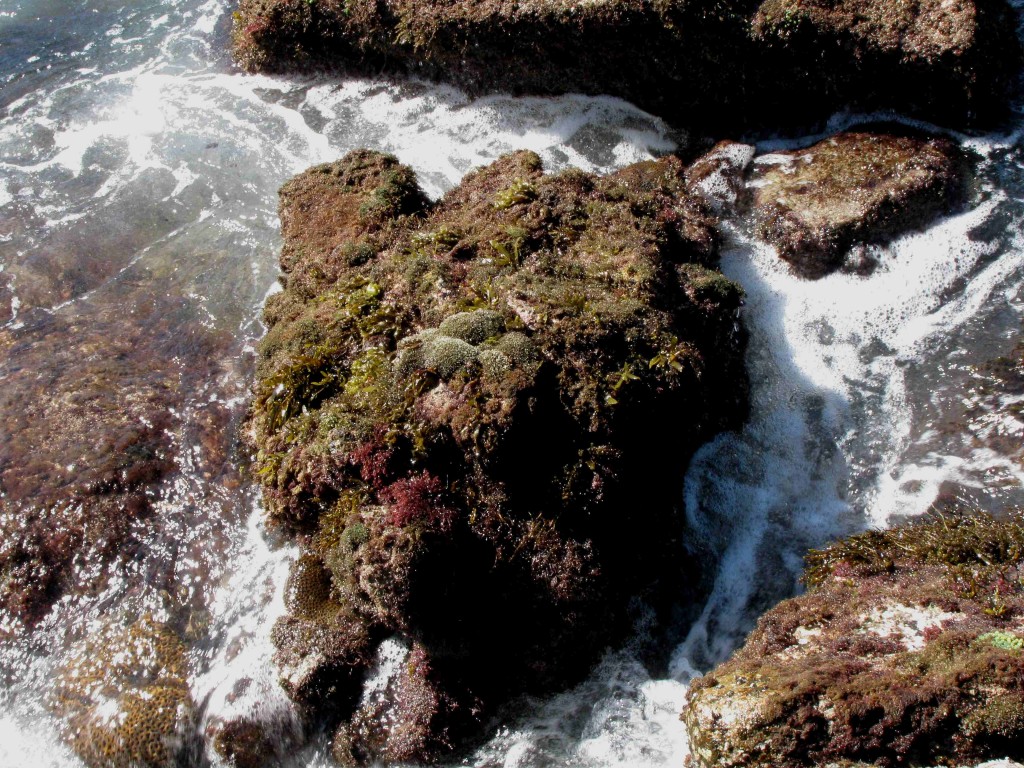
Intertidal Life at Alma Bay. (Note corals in lower left.) (© Vilis Nams)
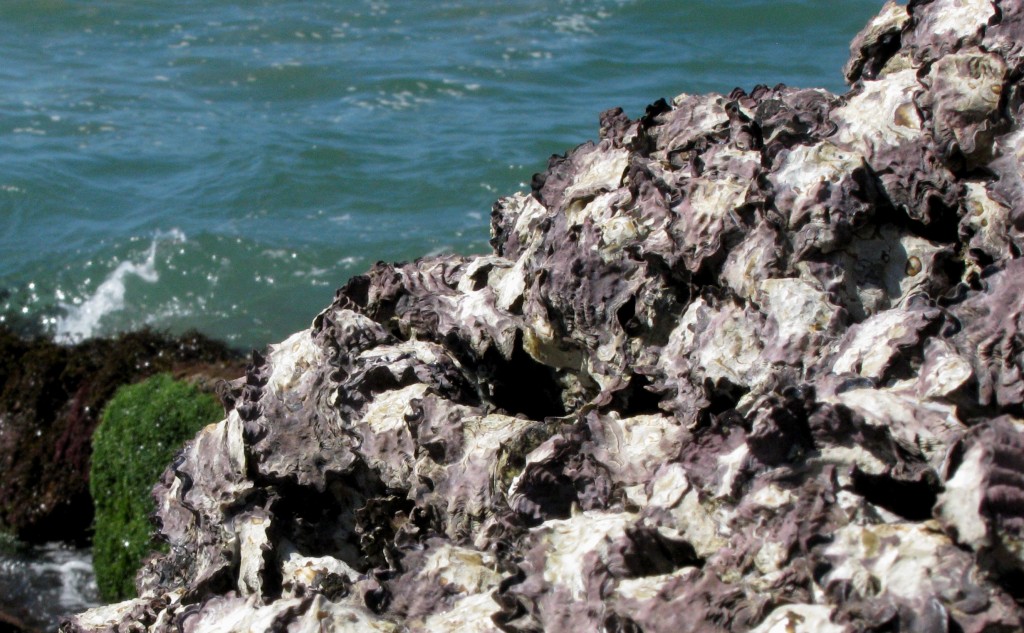
Oysters at Alma Bay (© Vilis Nams)
Oysters with jagged, wrinkled valves formed sharp-edged aggregations near high-tide level, while corals (at last seen clearly as irregular mounds of blue, pale orange or brown, one colony a bean-bag-sized lump of purple) hugged the lower reaches of boulders exposed by the receding tide.
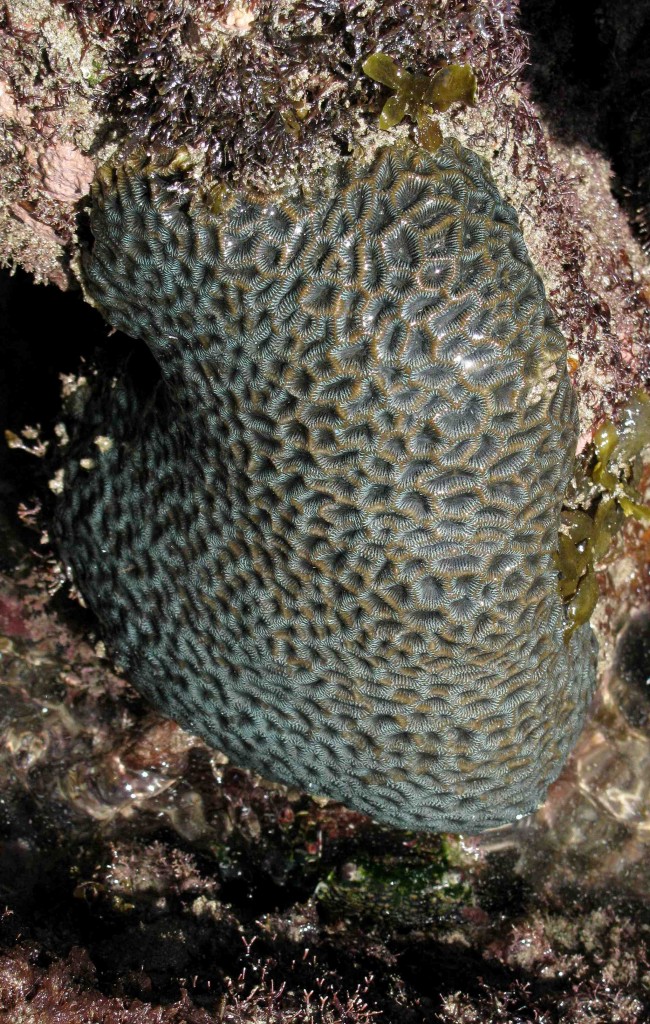
Coral at Alma Bay (© Vilis Nams)
Every square centimetre of space on those boulders up to high-tide line was occupied by sessile marine plants and animals generally located within neat bands corresponding to tidal level. In addition to the oysters and corals, we noted bands of brightly-coloured algae – brown, green, burgundy – as well as tiny, sharp-beaked mussels that looked as though they could gash open the skin of any hapless swimmer thrown against them by waves. Barnacles and snails closed tight against the drying air were scattered within the highest tide level, some in what was likely a splash zone. Palm-sized green crabs scuttled into rocky crevices, and small skinks, which I normally equate with purely terrestrial ecosystems, raced over algae on wet, freshly-exposed boulders.
After leaving the bathing reserve, we hiked across the rippled, water-smeared expanse of shallow Geoffrey Bay, its fringing reef lying exposed beneath the sun. Broken pieces of coral and detached clumps of algae lay stranded on the beach and sea floor, with the reef itself consisting of flat, brown plates muddied with sand and revealing little of its complexity.

Fringing Coral Reef at Geoffrey Bay, Magnetic Island (© Vilis Nams)
A brief stint of walking alongside the hilly, twisting pavement of Magnetic Island’s main road returned us to Nelly Bay. In mid-afternoon, we boarded the ferry and surged over green waves, watching Australasian gannets plunge to the ocean in spectacular hunting dives. In the space of 8 short kilometres, the holiday-destination atmosphere of Magnetic Island transformed into what Vilis and I definitely perceived as a ‘we work here’ ambience when we stepped onto the streets of Townsville.
Today’s fauna: figbirds, laughing kookaburras, pied currawongs, rainbow lorikeets, rainbow bee-eaters, house sparrows, welcome swallows, masked lapwings, Torresian crow, helmeted friarbird, orange-footed scrubfowl, sulphur-crested cockatoos, yellow-bellied sunbirds, bar-shouldered dove, blue tigers,*rainbow skinks,*eastern striped skinks, black-faced cuckoo-shrike, silver gulls, Australasian gannets. (*indicates lifelist sighting)

